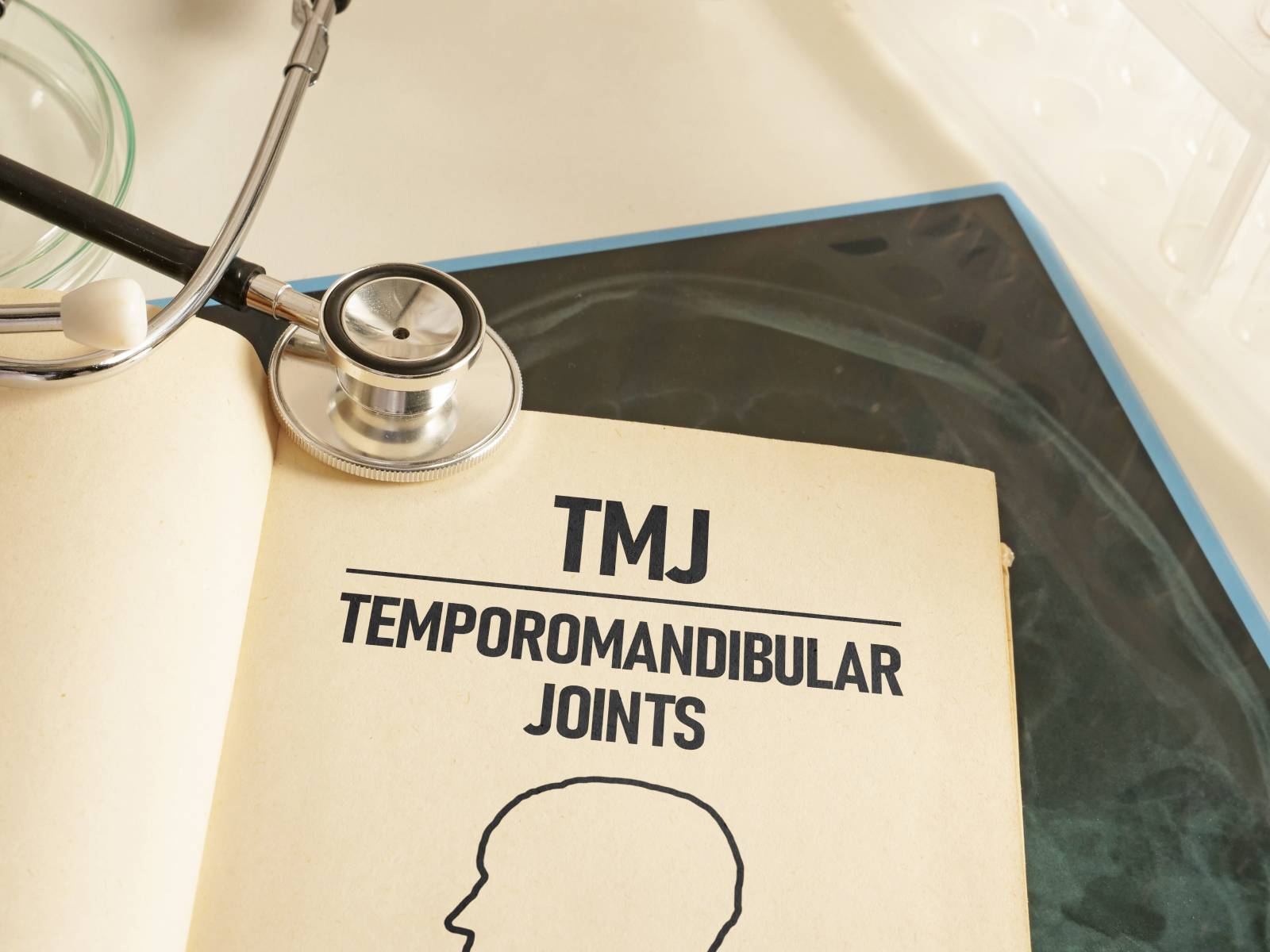Let’s talk about which types of braces can help ease jaw pain and improve comfort.
Many people who struggle with jaw pain, headaches, or difficulty chewing may actually be dealing with TMD (temporomandibular disorder).
TMD can be caused by a number of underlying issues, including:
- Bite misalignment
- Arthritis
- Jaw injuries
- Teeth grinding (bruxism) / muscle hyperactive
- Emotional stress
These problems can lead to pain, inflammation, and dysfunction in the temporomandibular joint (TMJ), which is the hinge that connects your jawbone to your skull. So when someone says they have “TMJ issues,” they’re usually talking about the symptoms caused by TMD.
The good news? Orthodontic treatments like braces, clear aligners, or nightguards can often help by:
- Reducing inflammation
- Relieving jaw pain
- Correcting bite misalignment
- Improving daily comfort
Signs You Might Benefit from Braces for TMJ Pain
Here are some common signs that should motivate you to seek an evaluation with a board certified orthodontist and/or a dentist board certified orofacial pain, in order to identify if your TMJ symptoms are linked to bite problems, which orthodontic treatment could help relieve:
- Frequent jaw soreness, stiffness, or tension, especially when chewing or speaking
- Clicking, popping, or locking of the jaw when opening or closing your mouth
- Headaches, earaches, or facial pain that start near the jaw
- Teeth that feel misaligned or don’t fit together properly
- Worn, chipped, or uneven teeth from grinding or clenching
If any of these symptoms sound familiar, braces or clear aligners could help by realigning your bite, reducing strain on your TMJ, and easing discomfort.
Best Types of Braces for TMJ Relief
Both traditional metal braces and clear aligners can help improve TMJ and TMD symptoms by correcting bite problems. But a recent 2024 study published in BMC Oral Health[1] found that clear aligners may offer extra benefits, especially for patient comfort and quality of life during treatment.
Here’s what the study found:
- Clear aligners were more effective overall at improving symptoms compared to metal braces.
- Patients using clear aligners showed better improvement in:
- Jaw comfort and chewing function
- Sleep quality and psychological well-being
- Inflammation levels in the body (which can contribute to jaw pain)
- Overall quality of life during treatment
- Clear aligners also helped maintain better gum and oral health compared to traditional metal braces.
So, while metal braces are still a strong choice, especially for fixing complex bite issues that might be causing TMJ/TMD symptoms, clear aligners may be even better for some patients. These aligners offer effective bite correction with less discomfort, lower inflammation, and a more comfortable treatment experience overall.
Of course, every patient’s case is different. The best option for you will ultimately depend on the severity of your bite problem, your jaw health, and personal preferences.
Talk to your orthodontist to find out which type of braces is best for your TMJ symptoms.
Common Concern: Can Braces Make TMJ Disorder Worse?
A study by the Journal of International Dental and Medical Research [2] found that braces may cause some temporary discomfort like mouth soreness and challenges with eating. However, by using these proper treatments and planning they can help reduce strain on the TMJ.
With careful planning and monitoring, braces typically don’t worsen TMJ symptoms. In fact, they often provide long-term relief by improving bite alignment and reducing stress on the jaw joint.
How to Know Which One Is Right for You
TMJ issues show up differently for everyone, from jaw pain and clicking to headaches and neck tension. A consultation with an experienced orthodontist is the best way to figure out which treatment will work best for your bite and symptoms.
At Enjoy Orthodontics, our friendly and expert team uses cutting-edge tools to assess your bite and symptoms, ensuring that your treatment plan is tailored just for you.
Whether braces or clear aligners are the best fit, we’ll help you find the solution that provides lasting relief and comfort.
Schedule a consultation today to discuss your options and start your journey toward better jaw health!
[1] Liu, F., Wang, Y., Luopei, D. et al. Comparison of fixed braces and clear braces for malocclusion treatment. BMC Oral Health 24, 941 (2024). https://doi.org/10.1186/s12903-024-04469-2
[2] Azrul Hafiz, Atiqah Jamal, Nurazfalina Azura, Rahimah Sahudi, and Murshida Marizan Nor, “The Impact of Fixed Appliances (Braces) on Quality of Life,” Journal of International Dental and Medical Research 12, no. 2 (2019): 652, https://www.jidmr.com/journal/wp-content/uploads/2019/07/49_D18_690_Azrul_Hafiz_bin_Abdul_Aziz_layout.pdf.





